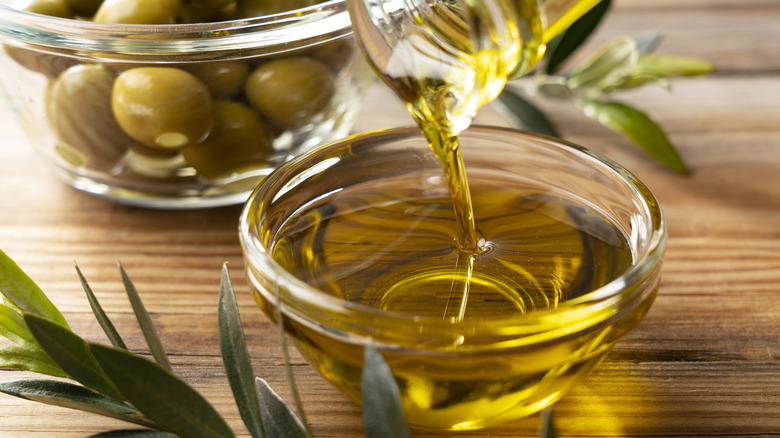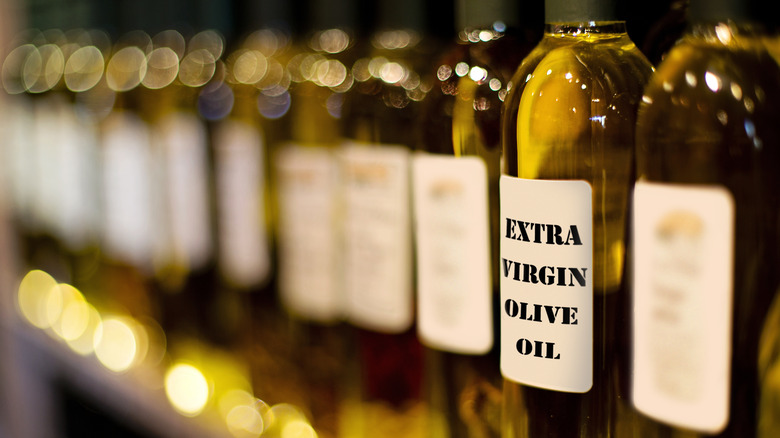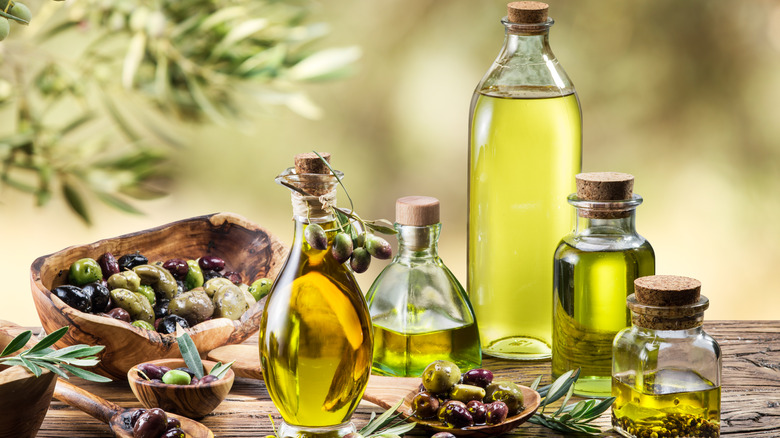California Olive Oil Might Be The Best Bet For US Shoppers. Here's Why
When it comes to olive oil, the Golden State makes a case that's hard to beat. While Americans still buy mostly from producers outside the country, there are some solid reasons to try California olive oil.
To begin with, olive oil production moves fast. Olives must be harvested at the perfect time; not too early or too late. A quick trip to the expeller press to crush the drupes is also essential and helps maintain optimal acidity levels. Those levels, among other things, help earn grade designations such as Extra Virgin Olive Oil (EVOO).
As the oil ages, it loses its high-quality state, oxidizing when it's exposed to heat, light, and air. That's why smaller bottles are recommended; you'll use the oil faster. It's also why the best bottle is the one that arrives from the orchard in the least time. For Americans, the closest oil may originate in the country's largest olive oil-producing region, California. But it isn't just close, the state has also developed some of the most rigorous testing standards around.
Strident standards
Here's what we know about how California monitors its own olive oil quality: The Olive Oil Commission of California (OOCC) became the law of the land in 2014 and is part of the California Department of Food and Agriculture. The standards set by the OOCC for grading olive oil are more stringent than those set by the United States Department of Agriculture and the International Olive Council. As a rule, any producer of more than 5,000 gallons of olive oil in the state must submit to mandatory yearly testing and random audits of every lot of olive oil and report to the OOCC. Producers of less than 5,000 gallons can participate but are not required.
Any producer whose grade does not meet OOCC standards must reflect the accurate grade on the bottle. The OOCC however, should not be confused with another California organization, the COOC, or California Olive Oil Commission.
Voluntary quality tests
Established to help promote the state's oil, the COOC offers its own seal of certification on EVOO with its own strict quality standards and an extra level of sensory taste and smell testing. COOC members are also tested yearly. Elise Oliver, California Apple Commission Director of Operations and Research, manages the state's other commodity brands like blueberries, wild rice, and olive oil. Oliver told us that while the OOCC is only mandatory for large producers, the voluntary COOC membership is comprised mainly of producers of under 5,000 gallons, "a large portion of the industry," while at the same time also counting on some larger producers as members.
At the 2022 New York International Olive Oil Competition, a world competition organized by Olive Oil Times, "Forty-one farmers and millers from the Golden State ... combined to earn a record-high 88 of the industry's most coveted quality awards. Of these, 52 awards were won by members of the [COOC]," reported the Olive Oil Times.
With worldwide awards, stricter quality standards than most world benchmarks, and the advantage of a shorter time spent in transit between the farm and your kitchen, California olive oil sounds like the winner in any grocery store purchase contest. Want to try some but don't know where to start? Californian olive oil shows up on our ranking of the top olive oil brands.


